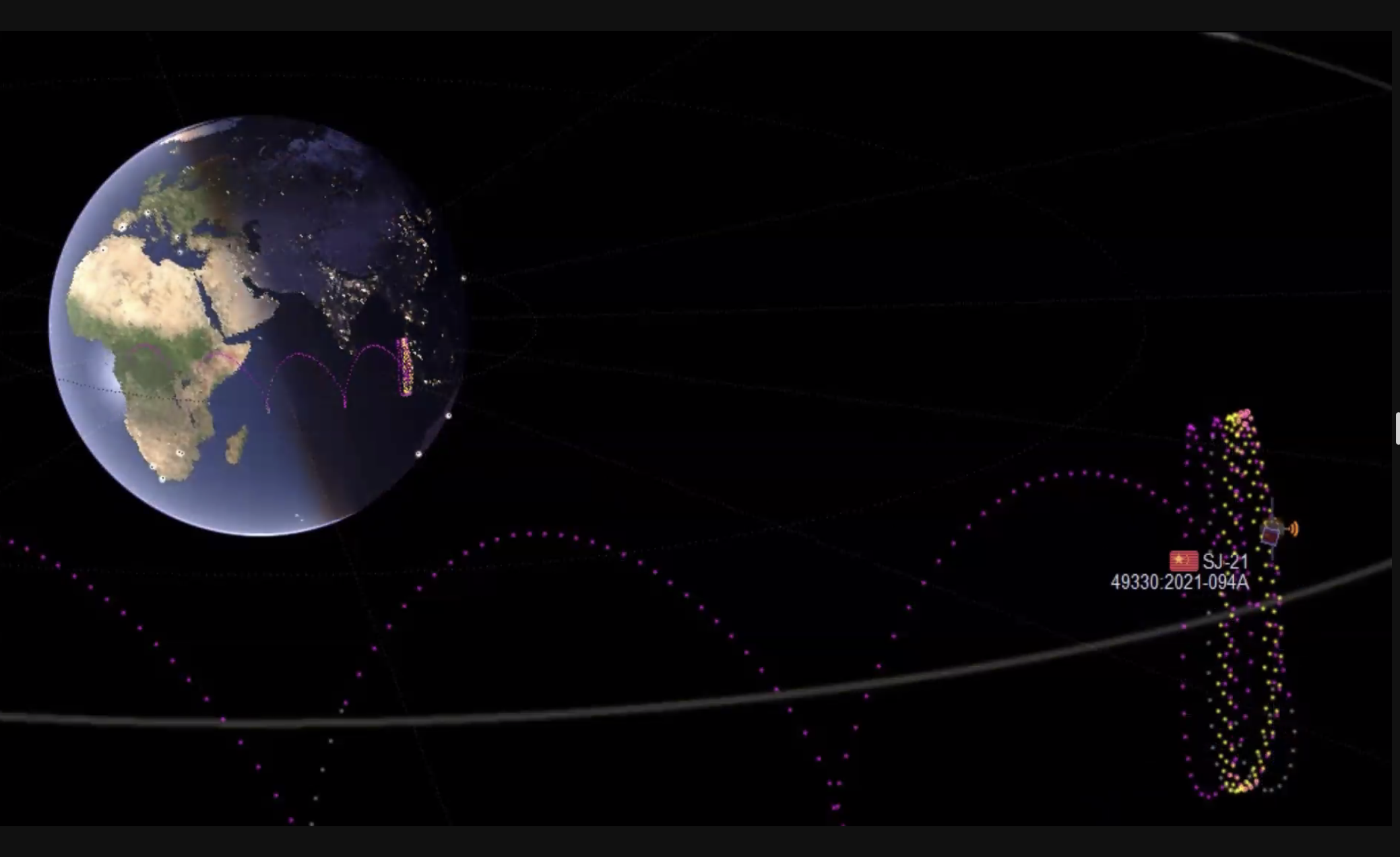HELSINKI — The People’s Liberation Army is working comprehensively on the technology and training tools for on-orbit satellite refueling for both peacetime and wartime scenarios.
The People’s Liberation Army (PLA) is already integrating lessons learned into military doctrine and training tools, while a defense contractor has already demonstrated what it calls a space fuel tanker in geosynchronous Earth orbit (GEO), according to a report published by the China Aerospace Studies Institute (CASI) March 18.
The report underlines that the PLA has a strategic focus on enhancing its on-orbit logistics capabilities and is integrating commercial enterprises into the space sector. These developments have potential implications for international space operations norms and should prompt action by the U.S. Space Force to attain similar capabilities and readiness.
The report details work by the PLA since 2018 to develop a computer simulation program for training military satellite operators in space-based refueling. This software aims to simulate the space environment and on-orbit service satellites for training, evaluation, and technology testing purposes.
Discussions on on-orbit satellite refueling and debris removal have been included in PLA textbooks since 2013, indicating an effort to normalize these missions within the PLA’s operations and to influence international norms regarding space operations.
The Shanghai Academy of Spaceflight Technology (SAST) has been promoting its satellite-refueling spacecraft since 2018. It successfully demonstrated its capabilities across late 2021 and early 2022 with Shijian-21. That mission saw the spacecraft dock with a defunct Beidou GNSS satellite in GEO and deliver it to a higher, so-called graveyard orbit.
The report seeks to assert that these capabilities could help the PLA sustain on-orbit space operations in wartime, an event deemed overlooked in comparison to a much-discussed, lower probability of a surprise satellite grappling event. It also notes a role for commercial actors.
“With more clarity on the PLA’s requirements for satellite logistics, the Chinese Communist Party (CCP) has approved new commercial players to enter the field to provide, not only technology, but also frameworks to shape international norms,” the report states.
The report notes that commercial companies are already active in the field. One firm named “Intersteller Walk” signed a launch agreement with Beijing-based launch service provider iSpace for a mission to demonstrate patented docking port technology using a satellite equipped with two robotic arms. That launch of a Hyperbola-1 solid rocket failed, however, in February 2021.
The development indicates growing interest and investment in on-orbit servicing within China, with China’s Ministry of Science and Technology also having included on-orbit servicing in its technology development plans since 2016. Intersteller Walk is thus likely one of several firms exploring this space, according to the report.
The report notes that the US intelligence community is aware of China’s advancements in on-orbit servicing capabilities, which could also potentially serve as counterspace weapons. It also suggests that the US Space Force should proactively engage in training for on-orbit servicing to enhance readiness, rather than waiting to develop its own servicing equipment.
A 2021 SpaceNews report noted the Space Force logistics lead as saying the culture of military satellite operators has not yet caught up to the technology. Earlier this month NASA canceled the multibillion-dollar On-Orbit Servicing, Assembly and Manufacturing (OSAM) 1 mission following extensive delays and cost overruns.
China’s advances in on-orbit servicing have largely gone unnoticed, the report states, while noting there has perhaps been an overemphasis on a low-probability satellite grappling event.
Meanwhile GEO has been the scene of deliberate “cat and mouse” activities and rendezvous and proximity operations (RPO) involving satellites from the U.S., Russia and China.
Related
Read the original article here
